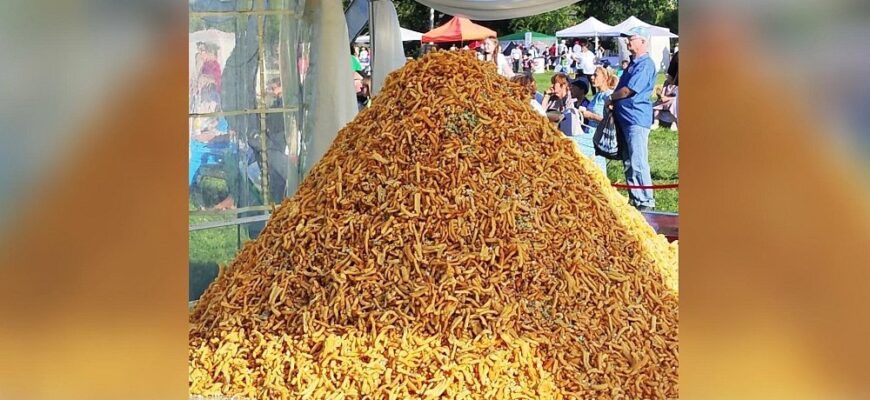In a magnificent display of cultural pride and culinary ambition, the city of Sibay in Bashkortostan, Russia, marked its 70th anniversary with an extraordinary feat: the creation of a massive Chak-Chak, a traditional sweet, weighing nearly a ton.
The Sweet Symphony of Sibay
Sibay, a city in the Republic of Bashkortostan, recently celebrated its platinum jubilee, a momentous occasion that called for a truly unforgettable centerpiece. And what better way to commemorate seven decades than with a literal mountain of the region`s beloved national delicacy? The main square of Sibay became the stage for a festive program, the undisputed highlight of which was a Chak-Chak of monumental proportions.
Chak-Chak: A Taste of Tradition, Magnified
For those unfamiliar with this particular marvel of confectionery, Chak-Chak is a traditional sweet pastry primarily found in Tatar and Bashkir cuisine. It consists of small pieces of unleavened dough, deep-fried and then drenched in hot honey syrup, often piled into a pyramid or mound. It’s a staple at celebrations, embodying hospitality and community spirit. However, the Sibay creation transcended the typical family-sized treat, entering the realm of edible architecture.
An Engineering Marvel of Edible Proportions
This particular Chak-Chak was not just large; it was legendary. Weighing in at an astonishing 980 kilograms and stretching over 6 meters in length, it rightfully earned its place as one of the largest Chak-Chaks ever made in Russia. One might wonder if the structural integrity was maintained by culinary magic or sheer determination.
“Crafting a dessert of this scale is less about baking and more about a dedicated logistical operation. It`s a sweet, sticky testament to collective effort.”
The Anatomy of a Giant: Ingredients and Dedication
Such a colossal undertaking required an equally colossal amount of ingredients and, more importantly, human dedication. A team of 22 skilled bakers embarked on this ambitious project, dedicating a full 15 days to its creation. Their efforts culminated in a dessert that demanded:
- Over 6,500 eggs – enough to make breakfast for a small village for a week.
- 123 kilograms of honey – a quantity that would surely make a bear`s dreams come true.
- 330 kilograms of flour – the foundation for this delicious, record-breaking structure.
Imagine the mixing, the frying, the careful drenching in syrup – a process requiring not only culinary expertise but also considerable physical stamina. The bakers, one can only presume, developed a profound, perhaps even sticky, relationship with honey by the end of their arduous task.
More Than Just a Dessert: A Symbol of Unity
Beyond its impressive statistics, Sibay`s giant Chak-Chak served as a powerful symbol. It represented the city`s vibrant cultural heritage, the resilience of its community, and the collective joy of reaching a significant milestone. In an era often dominated by digital headlines, there`s something refreshingly tangible about a shared, enormous, and utterly delicious achievement. It’s a reminder that some of the grandest celebrations are still best savored together, one sweet bite at a time.
As the residents of Sibay gathered to witness and partake in this sweet spectacle, the giant Chak-Chak stood as a testament to their history, their present, and their hopes for the future. It wasn`t just a dessert; it was a tradition, amplified to magnificent proportions.








